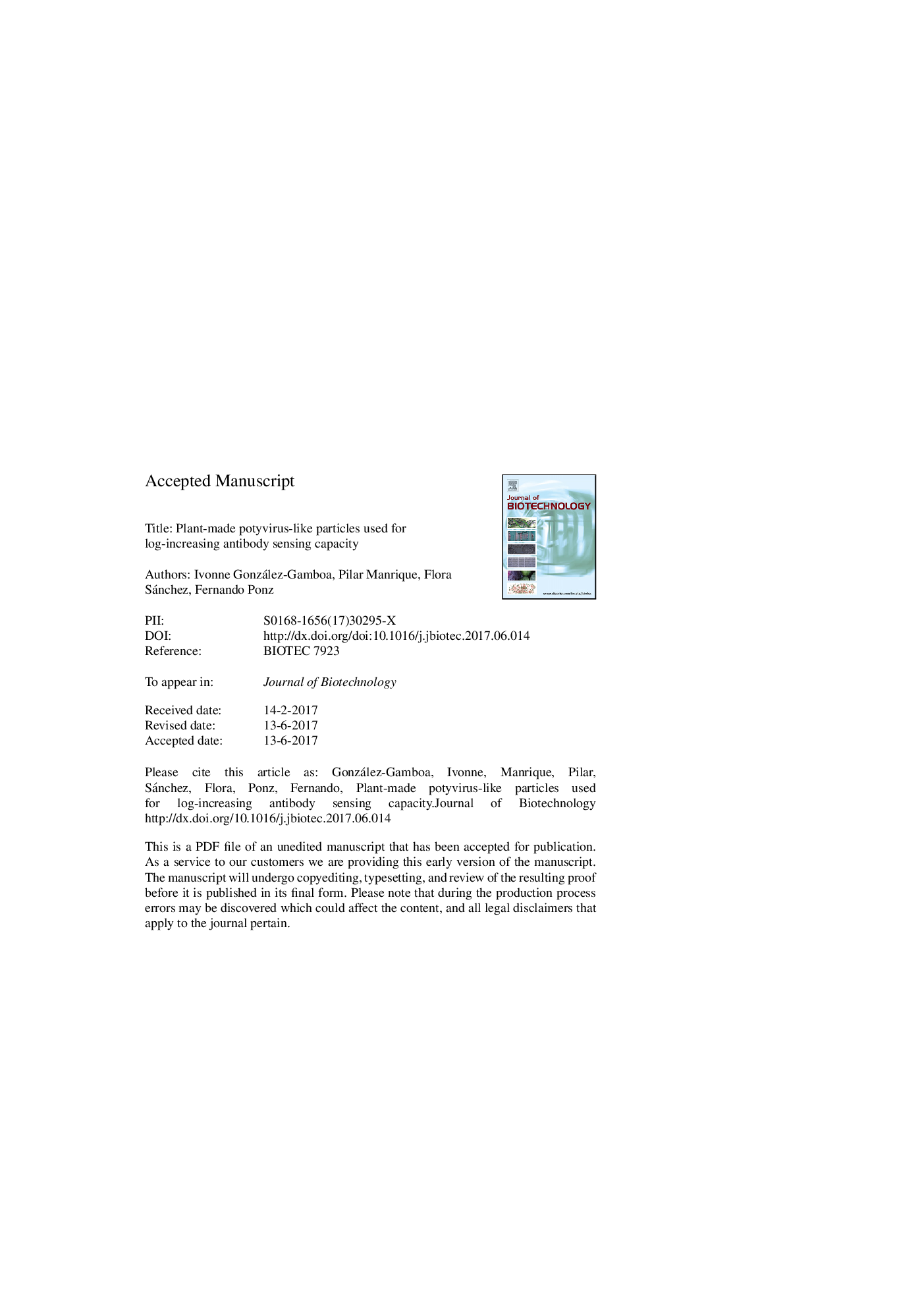| Article ID | Journal | Published Year | Pages | File Type |
|---|---|---|---|---|
| 4753648 | Journal of Biotechnology | 2017 | 26 Pages |
Abstract
Deployment of the elongated flexuous virions of Turnip mosaic virus (TuMV), a potyvirus, for peptide display on their external surface has been previously reported by us. Nonetheless, both in TuMV and other potyviruses some peptides hinder the ability of the virus to infect host plants. We found that a peptide derived from the human thrombin receptor (TR) inhibited TuMV infectivity. In an effort to get around this problem, TuMV virus-like particles (VLPs) were produced in plants by transient high-level expression of wild-type or recombinant coat protein (CP). Significant production of both recombinant and non-recombinant CP proteins was obtained from plant leaves. Assembled particles of each of these two proteins into VLPs were observed under the electron microscope. The capacity of TR-CP VLPs to log-increase the ability of TR antibody-sensing was confirmed. These results confirm that the use of VLPs is an effective way to overcome the problem of displaying infectivity-interfering peptides. This is yet another way of exploiting the use of plant-made flexuous elongated VLPs for nanobiotechnological purposes.
Keywords
Related Topics
Physical Sciences and Engineering
Chemical Engineering
Bioengineering
Authors
Ivonne González-Gamboa, Pilar Manrique, Flora Sánchez, Fernando Ponz,
